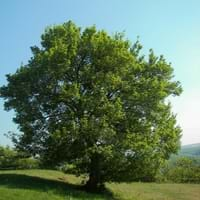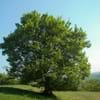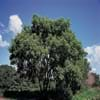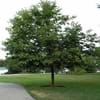Life Span
Perennial
Annual and Perennial
Type
Tree
Bulb or Corm or Tuber
Origin
Europe, Northern Africa, Western Asia
Central America, South America
Types
A. campestre var. campestre - downy fruit
A. campestre var. leiocarpum (Opiz) Wallr. (syn. A. campestre subsp. leiocarpum) - hairless fruit
Vine, Flowering plant
Habitat
Forest margins, gardens, Suburban areas, Woods
All sorts of environments, Along Railroads, Banks, Moist Ditches, Roadsides, rocky banks of streams
USDA Hardiness Zone
5-8
10-13
Sunset Zone
2a, 2b, 3a, 3b, 4, 5, 6, 7, 8, 9, 14, 15, 16, 17
21,22
Habit
Oval or Rounded
Vining/Climbing
Minimum Width
Not Available
Flower Color
Green, Light Yellow
Purple, Rose
Flower Color Modifier
Bicolor
Bicolor
Fruit Color
Light Yellow, Light Pink, Light Green, Tan
Not Available
Leaf Color in Spring
Green, Light Green
Purple, Dark Green, Black
Leaf Color in Summer
Dark Green
Light Green
Leaf Color in Fall
Yellow, Gold, Tan
Several shades of Green
Leaf Color in Winter
Not Available
Light Green
Leaf Shape
Maple shaped
Acicular
Plant Season
Spring, Summer, Fall
Spring, Summer, Fall, Winter
Sunlight
Full Sun, Partial Sun
Full Sun, Partial Sun
Growth Rate
Slow
Very Fast
Type of Soil
Clay, Loam, Sand
Clay, Loam, Sand
The pH of Soil
Acidic, Neutral, Alkaline
Acidic, Neutral, Alkaline
Soil Drainage
Average
Well drained
Bloom Time
Early Spring
Late Spring, Early Summer, Summer, Late Summer, Early Fall, Fall, Late Fall
Tolerances
Pollution, Soil Compaction
Drought
Where to Plant?
Ground
Container, Ground
How to Plant?
Grafting, Seedlings, Transplanting
Cuttings, Leaf Cutting, Tuber propagation
Plant Maintenance
Medium
Medium
Watering Requirements
Needs watering once a week, Requires watering in the growing season
Keep the Soil well drained, Needs very little water
In Summer
Lots of watering
Lots of watering
In Spring
Moderate
Moderate
In Winter
Average Water
Average Water
Soil pH
Acidic, Neutral, Alkaline
Acidic, Neutral, Alkaline
Soil Type
Clay, Loam, Sand
Clay, Loam, Sand
Soil Drainage Capacity
Average
Well drained
Sun Exposure
Full Sun, Partial Sun
Full Sun, Partial Sun
Pruning
Prune if you want to improve plant shape, Prune in winter, Prune to stimulate growth, Remove damaged leaves, Remove dead leaves, Remove deadheads
Remove damaged leaves, Remove dead branches, Remove dead leaves
Fertilizers
All-Purpose Liquid Fertilizer
All-Purpose Liquid Fertilizer
Pests and Diseases
Fungal Diseases
Red blotch
Plant Tolerance
Drought
Drought
Flowers
Insignificant
Showy
Flower Petal Number
Single
Single
Foliage Texture
Medium
Coarse
Foliage Sheen
Glossy
Matte
Attracts
Not Available
Aphids, Beetles, Cutworms, Insects, Mites, Whiteflies
Allergy
Asthma
Abdominal pain, allergic reaction, Nausea, Skin rash, Twitching of face
Aesthetic Uses
Showy Purposes
Not Used For Aesthetic Purpose
Beauty Benefits
Not Available
Not Available
Environmental Uses
Air purification
Air purification
Medicinal Uses
Sore Eyes
Cures constipation, Fiber, Low calories, lowering blood pressure, Potassium, ß-carotene, Vitamin A, Vitamin C
Part of Plant Used
Bark, Sap
Leaves, Root, Shoots, Stem, Tuber
Other Uses
Grown for shade, Used in Furniture, Used in making musical instruments
Starch, Used As Food, Used as Ornamental plant
Used As Indoor Plant
No
Sometimes
Used As Outdoor Plant
Yes
Yes
Garden Design
Feature Plant, Hedges, Screening / Wind Break, Shade Trees
Container, Edible, Groundcover, Hanging Basket, Herb / Vegetable, Mixed Border, Rock Garden / Wall, Vine
Botanical Name
ACER campestre
IPOMOEA batatas 'Blackie'
Common Name
Field Maple, Hedge Maple
Blackie Sweet Potato Vine, Sweet Potato Vine
In Hindi
फील्ड मेपल
शकरकन्द
In German
Feld-Ahorn
Süßkartoffel
In French
Maple terrain
Patate douce
In Spanish
arce de campo
Ipomoea batatas
In Greek
Το πεδίο Maple
Sweet potato
In Portuguese
bordo de campo
Batata-doce
In Polish
Klon polny
Wilec ziemniaczany
In Latin
Field Maple
Ipomoea batatas
Phylum
Magnoliophyta
Tracheophyta
Class
Magnoliopsida
Magnoliopsida
Order
Sapindales
Solanales
Family
Aceraceae
Convolvulaceae
Clade
Angiosperms, Eudicots, Rosids
Angiosperms, Asterids, Eudicots
Tribe
Not Available
Not Available
Subfamily
Hippocastanoideae
Not Available
Number of Species
Not Available
Season and Care of Field Maple and Sweet Potato Vine
Season and care of Field Maple and Sweet Potato Vine is important to know. While considering everything about Field Maple and Sweet Potato Vine Care, growing season is an essential factor. Field Maple season is Spring, Summer and Fall and Sweet Potato Vine season is Spring, Summer and Fall. The type of soil for Field Maple is Clay, Loam, Sand and for Sweet Potato Vine is Clay, Loam, Sand while the PH of soil for Field Maple is Acidic, Neutral, Alkaline and for Sweet Potato Vine is Acidic, Neutral, Alkaline.
Field Maple and Sweet Potato Vine Physical Information
Field Maple and Sweet Potato Vine physical information is very important for comparison. Field Maple height is 910.00 cm and width 910.00 cm whereas Sweet Potato Vine height is 15.00 cm and width Not Available. The color specification of Field Maple and Sweet Potato Vine are as follows:
Field Maple flower color: Green and Light Yellow
Field Maple leaf color: Green and Light Green
Sweet Potato Vine flower color: Purple and Rose
- Sweet Potato Vine leaf color: Purple, Dark Green and Black
Care of Field Maple and Sweet Potato Vine
Care of Field Maple and Sweet Potato Vine include pruning, fertilizers, watering etc. Field Maple pruning is done Prune if you want to improve plant shape, Prune in winter, Prune to stimulate growth, Remove damaged leaves, Remove dead leaves and Remove deadheads and Sweet Potato Vine pruning is done Remove damaged leaves, Remove dead branches and Remove dead leaves. In summer Field Maple needs Lots of watering and in winter, it needs Average Water. Whereas, in summer Sweet Potato Vine needs Lots of watering and in winter, it needs Average Water.





